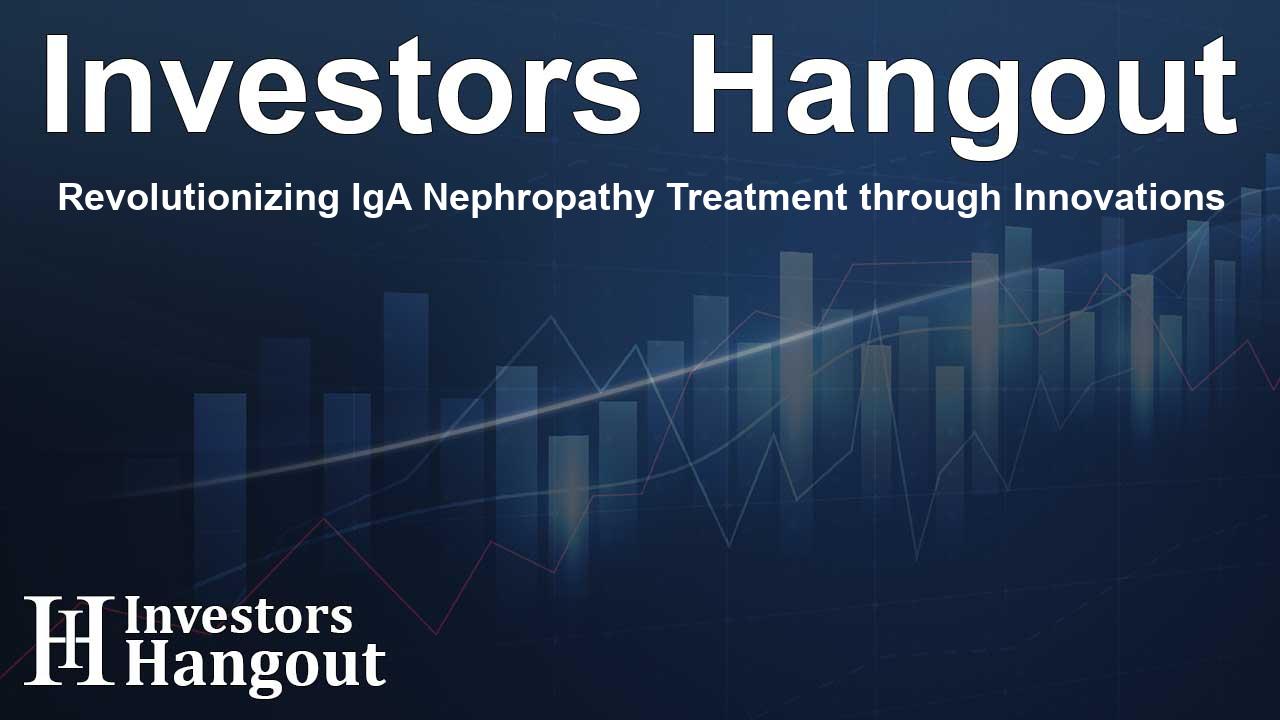Revolutionizing IgA Nephropathy Treatment through Innovations

Transformative Approaches in IgA Nephropathy Treatment
Nephrologists worldwide are witnessing a revolutionary transformation in the management of IgA Nephropathy (IgAN), a condition impacting kidney function. With a range of targeted therapies now at their disposal, healthcare professionals are adeptly navigating this evolving landscape. The insights gathered from comprehensive market research reveal significant changes in treatment methodologies, highlighting how clinicians are rethinking care strategies for patients suffering from this complex disorder.
Emerging Therapeutics and Their Impact
One of the most notable advancements in IgAN care is the incorporation of SGLT2 inhibitors into standard treatment protocols. Originally developed for diabetes management, these agents are finding their way into early treatment options for IgAN, as evidence mounts regarding their protective effects on the kidneys. With year-over-year increases in their adoption across different regions, nephrologists now view SGLT2 inhibitors as foundational therapy for patients who are not yet on dialysis.
The Role of Novel Medications
In addition to SGLT2 inhibitors, innovative drugs designed specifically to manage IgAN are beginning to take center stage. Medications like Calliditas' Tarpeyo and Travere's Filspari have gained momentum in the United States, rapidly becoming integral to the treatment formularies. For instance, it is reported that nearly 20% of IgAN patients in the U.S. are currently receiving Tarpeyo, while Filspari's prescription rates have seen a remarkable increase in recent months.
Regional Variations in Treatment Practices
Across the globe, different regions are experiencing distinct trends in IgAN management. For example, the use of tonsillectomy remains prevalent in Japan, where it is often used in combination with corticosteroids. Conversely, practitioners in the United States and China are pivoting away from broad immunosuppression therapies, favoring targeted treatments that promise better safety profiles. This divergence underscores the necessity for localized strategies in addressing IgAN.
Goals and Challenges in Management
Despite the influx of new therapies, a common objective among nephrologists remains: achieving proteinuria levels below 0.5 g/day. Unfortunately, many patients still exceed this target, indicating a pressing need for additional treatment options. As a response, companies like Novartis are stepping up with recently approved therapies such as Fabhalta and Vanrafia, which may provide new alternatives to existing treatments.
Future Directions in IgAN Care
The landscape of IgAN treatment continues to evolve, driven by advancements in clinical research and an expanding arsenal of therapeutic options. As innovative agents targeting various disease pathways emerge, nephrologists are better equipped to navigate the complexities of patient care. Nonetheless, while excitement surrounding these new therapies is palpable, safety considerations persist, influencing how quickly these innovations can be integrated into practice.
The Importance of Real-World Data
As Spherix Global Insights diligently tracks these shifts in treatment patterns over the years, it provides an invaluable resource for stakeholders in the nephrology field. This kind of real-world data is critical for understanding how treatments are being applied in clinical settings, ensuring that future therapeutic strategies are informed by actual patient outcomes.
Frequently Asked Questions
What is IgA Nephropathy?
IgA Nephropathy is a kidney disease characterized by the accumulation of Immunoglobulin A (IgA) in the kidneys, which can lead to inflammation and damage.
How have SGLT2 inhibitors changed treatment protocols?
SGLT2 inhibitors have been integrated earlier into treatment regimens for IgAN, expanding their use beyond diabetes and showing promise in protecting kidney function.
What role do new medications like Tarpeyo and Filspari play?
These novel therapies are specifically designed for IgAN, providing targeted treatment options that have gained popularity among nephrologists for their efficacy.
Are there regional differences in IgAN management?
Yes, different regions utilize varied treatment approaches, with some opting for traditional methods like tonsillectomy, while others focus on modern, targeted therapies.
What is the significance of tracking treatment trends?
Monitoring treatment patterns is crucial for stakeholders to understand the evolving landscape, enabling them to make informed decisions about future care strategies.
About The Author
Contact Kelly Martin privately here. Or send an email with ATTN: Kelly Martin as the subject to contact@investorshangout.com.
About Investors Hangout
Investors Hangout is a leading online stock forum for financial discussion and learning, offering a wide range of free tools and resources. It draws in traders of all levels, who exchange market knowledge, investigate trading tactics, and keep an eye on industry developments in real time. Featuring financial articles, stock message boards, quotes, charts, company profiles, and live news updates. Through cooperative learning and a wealth of informational resources, it helps users from novices creating their first portfolios to experts honing their techniques. Join Investors Hangout today: https://investorshangout.com/
The content of this article is based on factual, publicly available information and does not represent legal, financial, or investment advice. Investors Hangout does not offer financial advice, and the author is not a licensed financial advisor. Consult a qualified advisor before making any financial or investment decisions based on this article. This article should not be considered advice to purchase, sell, or hold any securities or other investments. If any of the material provided here is inaccurate, please contact us for corrections.
